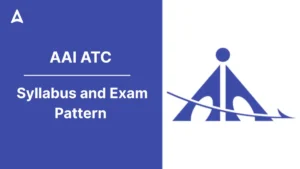Q1. Maximum area under wheat in India is occupied by the species
(a) aestivum
(b) dicoccum
(c) durum
(d) vulgare
(e) None of these
Q2. Transgenic crop having maximum cultivated area in the world
(a) Maize
(b) Rice
(c) Soybean
(d) Cotton
(e) None of these
Q3. Black heart and hollow heart in potato is due to
(a) Virus
(b) Nitrogen deficiency
(c) Environmental condition
(d) Nutrient deficiency
(e) Bacterial infection
Q4. Seed rate for maize as fodder crop will be
(a) 20 kg/ha
(b) 8 kg/ha
(c) 25 kg/ha
(d) 40 kg/ha
(e) 12 kg/ha
Q5. ‘Indian Journal of Fertilizer’ is published by
(a) NAFED
(b) ICAR
(c) NABARD
(d) FAI
(e) IARI
Q6. No-Till planter is used for-
(a) Growing crops in mountain regions
(b) Preventing soil erosion
(c) Growing crops in water-logged conditions
(d) Growing crop in barren and dry regions
(e) None of the above
Q7. Spacing for standard variety of apple tree is
(a) 5-10 feet
(b) 10-15 ft
(c) 20-30 ft
(d) 15-20 ft
(e) 30-40 ft
Q8. AGMARK standards cover quality guidelines for which commodity?
(a) Pulses
(b) Cereals
(c) Vermicelli
(d) Essential oils
(e) All of these
Q9. Highest area under potato cultivation in India is in
(a) Bihar
(b) Maharashtra
(c) Andhra Pradesh
(d) Uttar Pradesh
(e) Madhya Pradesh
Q10. Photo-periodically, rice is a
(a) Day neutral plant
(b) Short day plant
(c) Long day plant
(d) Both a and c
(e) None of these
Solutions
S1. Ans (a)
Sol. Three varieties of wheat are grown in India, where T.aestivum or bread wheat being the most commonly grown one. It is produced in almost all the wheat cultivating states of India, i.e., Uttar Pradesh, Punjab, Haryana, Rajasthan, Bihar, West Bengal, Assam, etc. The second most common variety is T.durum or macaroni/pasta wheat which is grown in Madhya Pradesh, Maharashtra, Gujarat, Southern Rajasthan and few locations in Punjab. The third kind, T.dicoccum or Emmer is rarely grown in the country and is only found to be cultivated in Karnataka, Maharashtra and Tamil Nadu that too very less compared to the other varieties.
S2. Ans (c)
Sol. In terms of acreage, the most commonly genetically modified crops are soybeans, corn, cotton, and canola as of 2019. 48.2 percent of all soybean plants and 13.5 percent of all the cotton grown worldwide are genetically modified. The United States had the largest area of genetically modified crops worldwide in 2019, at 71.5 million hectares, followed by Brazil with a little over 52.8 million hectares.
S3. Ans (c)
Sol. Hollow heart is a disease of potato, but there is no infectious agent involved; this problem is purely environmental. When environmental conditions fluctuate rapidly during potato tuber development, hollow heart is a risk. Stressors like inconsistent watering, large fertilizer applications or highly variable soil temperatures increase the likelihood that hollow heart will develop.
S4. Ans (d)
Sol. Maize is an annual crop. It is grown on a variety of soils, but well drained fertile soils are best suited. Maize is mostly grown as kharif crop i.e., Sowing in June July. In south India it makes best growth in rabi and also in summer. It can be grown throughout the year with irrigation facility maintaining a seed rate of 40 kg/ha.
S5. Ans (d)
Sol. Indian Journal of Fertilizer is a monthly journal in English. It contains original articles in the area of fertilizer and agriculture covering technology, marketing, agronomic aspects, environmental issues, news regarding development in the fertilizer sector, book reviews etc. It is published by the Fertilizer Association of India. The Fertiliser Association of India (FAI) is a non- profit and non-trading company representing mainly the fertiliser manufacturers, distributors, importers, equipment manufacturers, research institutes and suppliers of inputs. The Association was established in 1955 with the objective of bringing together all concerned with the production, marketing and use of fertilisers.
S6. Ans (b)
Sol. No-till farming methods suggest zero or the least soil disturbance. With conventional ploughing, the top layer is turned over before seeding. Tillage helps to aerate the soil, incorporate manure and fertilizers, loose the earth for future fragile seedling roots, to destroy pests, eradicate weeds. However, this agriculture technique strongly promotes soil erosion, removing the cover matter, causes an imbalance in micro-communities, and releases soil carbon into the air, contributing to the greenhouse effect. Therefore, no-till farming is most suited in order to prevent soil erosion.
S7. Ans (c)
Sol. Distance between fruit trees
Apple (Standard) ———– 30 ft.
Apple (Semi-dwarf) ——– 15 ft.
Apple (Dwarf) ————— 10 ft.
S8. Ans (e)
Sol. The AGMARK is legally enforced in India by the Agricultural Produce (Grading and Marking) Act of 1937 (and amended in 1986). The AGMARK standards cover quality guidelines for different commodities spanning a variety of Pulses, Cereals, Essential Oils, Vegetable Oils, Fruits & Vegetables, and semi- processed products like Vermicelli.
S9. Ans (d)
Sol. The major potato growing states are Uttar Pradesh, West Bengal, Punjab, Bihar, Haryana, Madhya Pradesh, Gujarat and Maharashtra.
S10. Ans (b)
Sol. Short-day Plants bloom when the length of daylight (the photoperiod) drops below a particular critical threshold, typically in late summer or autumn, after the equinox. Examples of short day plants include: chrysanthemum, rice, soybean, onion, violet, Christmas cactus, and poinsettia.



 GA Capsule for SBI Clerk Mains 2025, Dow...
GA Capsule for SBI Clerk Mains 2025, Dow...
 The Hindu Review October 2022: Download ...
The Hindu Review October 2022: Download ...
 AAI ATC Syllabus 2025 and Exam Pattern
AAI ATC Syllabus 2025 and Exam Pattern





